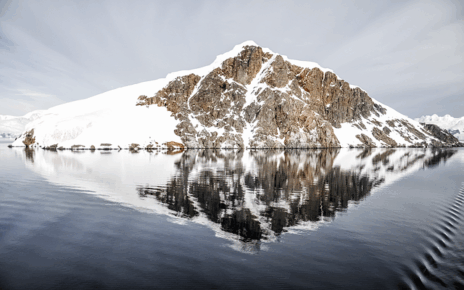
A new study carried out by researchers from Johannesburg suggests that an ancient lost continent fragment might be hiding beneath Mauritius in the Indian Ocean. Mauritius is a former British colony, located east of Madagascar and with a population of around 1.3 million.
Sometime back, researchers in Mauritius had found 3-billion-year-old Zirconian crystals that reached the surface through lava from a volcano. Scientists after a detailed study reached the conclusion that these crystals belonged to a land mass Mauritia that was submerged in the Indian Ocean.
“Evidence is accumulating that old continental crust may occur beneath some young ocean-island volcanoes, contributing contaminating components to their chemical and isotopic compositions,” Lewis D. Ashwal, Michael Wiedenbeck & Trond H. Torsvik, authors write in their study.
However, according to Dr Ashwal, a geologist at the University of the Witwatersrand, Johannesburg, in South Africa, the newly-found continent is actually a “continent in the geological sense, not in the geographical one.” He also suggests that Mauritia should be referred to as a continental fragment or microcontinent rather than as a “lost continent.”
Zircons minerals mainly occur in granites from the continents and contain trace amounts of uranium, lead and thorium. They can very well survive geological process, and therefore are believed to contain a rich record of geological processes.
According to scientists, about 3 billion years ago, a continent covered the ocean where the East African Island is now located. This continent connected Madagascar with India. Scientists believe around 60 million years ago, Mauritia, about 1,500 km wide, separated from the rest of the continent. The hypothesis is based on the fact that Mauritius island is only about nine million years old, as suggested by earlier studies. Scientists also believe that the oceanic crust on which Mauritius is thought to be resting is not likely to be more than about 200 million years old. However, the zircon crystals found on Mauritius were dated to be around three billion years old, much older than any oceanic crust and Mauritius.
“Mauritia acted as a buffer zone between the western Indian subcontinent and eastern Madagascar, and was fragmented by numerous tectonic and volcanic events that occurred in that region since the early Cretaceous,” the authors said in the study.
According to Professor Lewis Ashwal and colleagues from Wits University in Johannesburg, the crystals were dated using mass spectrometry imaging technique. They also used computer modeling technique to recreate the separation of Mauritia on computer.
“Our findings confirm the existence of continental crust beneath Mauritius and document, for the first time, the presence of Archaean zircons as xenocrysts in young volcanic rocks from ocean basin settings,” Professor Ashwal wrote in the study, suggesting that the continental crust beneath Mauritius would have been part of this continent ‘Mauritia’.
“Mauritius and other Mauritian continental fragments are dominantly underlain by Archaean continental crust, and that these originally formed part of the ancient nucleus of Madagascar and India.”
“Mauritia acted as a buffer zone between the western Indian subcontinent and eastern Madagascar, and was fragmented by numerous tectonic and volcanic events that occurred in that region since the early Cretaceous,” the authors said.
Professor Ashwal told MailOnline: “This result is important because it allows us to better understand the processes by which continents break apart due to plate tectonics, and it also allows us to reconstruct the positions of these and other pieces of continent back in time.”
The detailed findings of the study have been published in Nature Communications.
